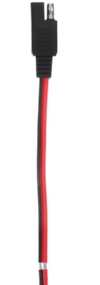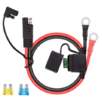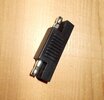Am looking at a bike with a long SAE connector lead from the battery to the front, but not connected to anything. Looks like a lead you'd be tempted to use for power to the tank bag (it is tied to a Gerbings lead).
However....it also looks like it could be the line the PO was using for connecting his battery tender....no idea why it is routed to the front the way it is.
Does it mean it would take a reverse polarity SAE plug (+ fuse) on this line to actually use it for power to the bag ?
However....it also looks like it could be the line the PO was using for connecting his battery tender....no idea why it is routed to the front the way it is.
Does it mean it would take a reverse polarity SAE plug (+ fuse) on this line to actually use it for power to the bag ?



